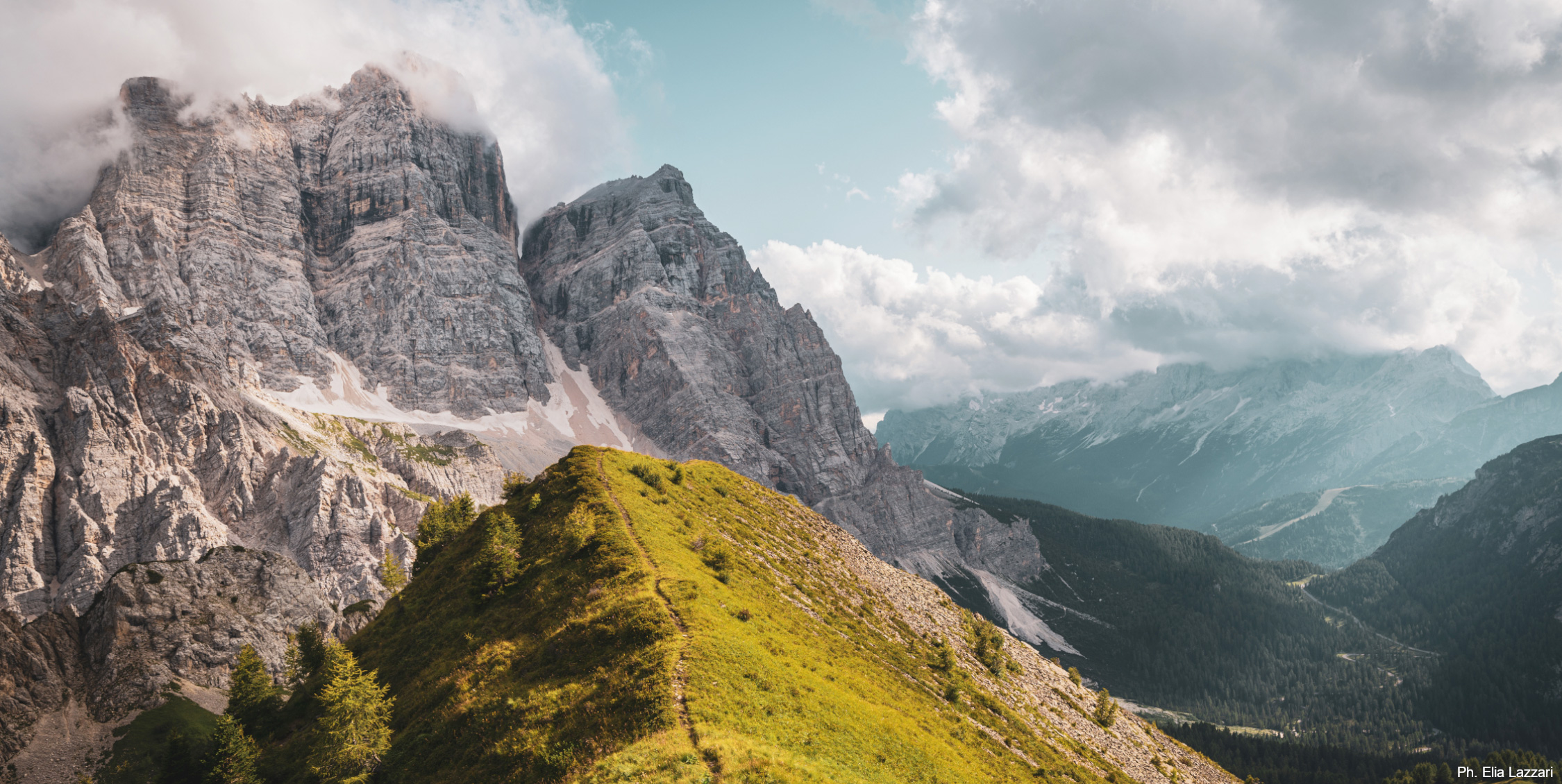The nine Systems of the Dolomites
Pelmo and Croda da Lago
Covering an area of 4,344 hectares, all within the boundaries of the Province of Belluno, the Pelmo-Croda da Lago System extends to the north-west/south-east taking in Valle del Bóite to the east, Val di Zoldo and Val Fiorentina to the south, Val Codalonga to the west, and Val Costeana to the north.
The System takes its name from its two most well-known peaks, but includes others of no less importance such as Lastoi de Formin and Monte Cernera. Within just a few kilometres there is an extraordinary variety of formations, from the rugged peaks of Croda da Lago to the verdant pastures of Mondeval. Pelmo dominates, and history was made on this peak when it became the first in the Dolomites to be conquered by mountaineers, with John Ball’s successful ascent in 1857.
Geology
Explore
Google Street View




